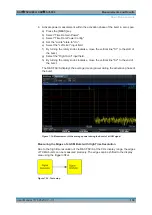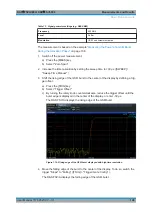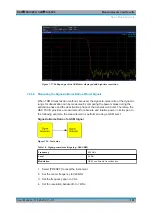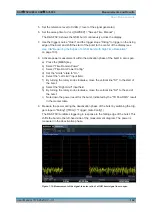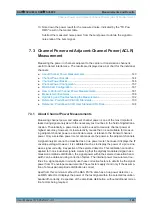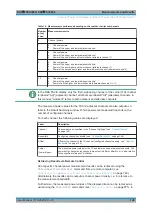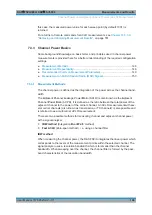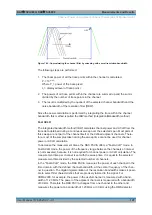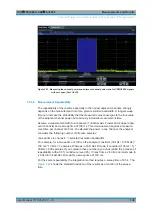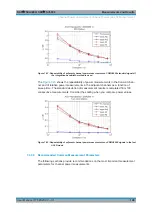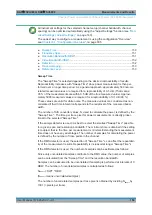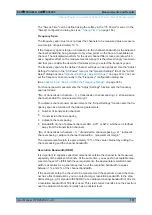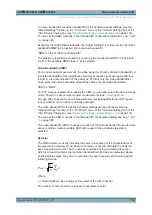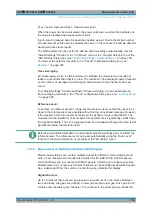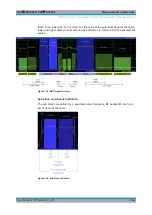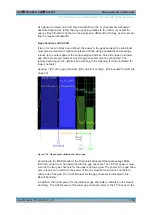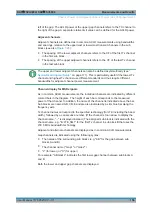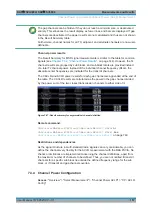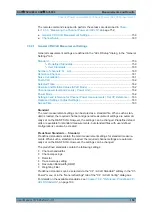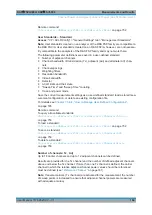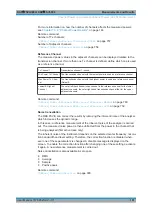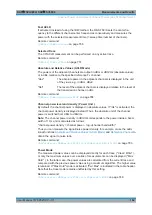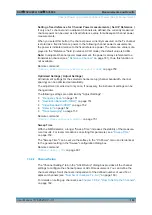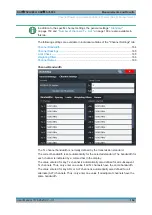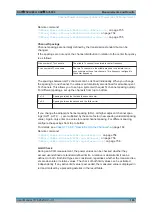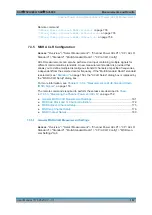
Measurements and Results
R&S
®
FSVA3000/ R&S
®
FSV3000
152
User Manual 1178.8520.02 ─ 01
You can optimize the resolution bandwidth for the defined channel settings. Use the
"Adjust Settings" function in the "Ch Power" menu or the "General Settings" tab of the
"ACLR Setup" dialog box (see
"Optimized Settings ( Adjust Settings )"
You can set the RBW manually in the "Bandwidth" configuration dialog box, see
Except for the IS95 CDMA standards, the "Adjust Settings" function sets the resolution
bandwidth (RBW) as a function of the channel bandwidth:
"RBW" ≤
1/40 of "Channel Bandwidth"
The maximum resolution bandwidth (concerning the requirement RBW ≤
1/40) result-
ing from the available RBW steps (1, 3) is selected.
Video Bandwidth (VBW)
For a correct power measurement, the video signal must not be limited in bandwidth. A
restricted bandwidth of the logarithmic video signal causes signal averaging and thus
results in a too low indication of the power (-2.51
dB at very low video bandwidths).
Thus, select the video bandwidth at least three times the resolution bandwidth:
VBW ≥3
* RBW
For FFT sweeps, instead of increasing the VBW, you can also select the trace average
mode "Power" to ensure correct power measurements (see
on page 495). Note that in power measurements this setting affects the VBW regard-
less of whether or not a trace is actually averaged.
The video bandwidth for the defined channel settings can be optimized. Use the
"Adjust Settings" function in the "Ch Power" menu or the "General Settings" tab of the
"ACLR Setup" dialog box (see
"Optimized Settings ( Adjust Settings )"
You can set the VBW manually in the "Bandwidth" configuration dialog box, see
The video bandwidth (VBW) is set as a function of the channel bandwidth (see formula
above) and the smallest possible VBW with regard to the available step size is
selected.
Detector
The RMS detector correctly indicates the power irrespective of the characteristics of
the signal to be measured. The whole IF envelope is used to calculate the power for
each measurement point. The IF envelope is digitized using a sampling frequency
which is at least five times the resolution bandwidth which has been selected. Based
on the sample values, the power is calculated for each measurement point using the
following formula:
N
i
i
RMS
s
N
P
1
2
1
Where:
s
i
= linear digitized video voltage at the output of the A/D converter
N = number of A/D converter values per measurement point
Channel Power and Adjacent-Channel Power (ACLR) Measurement


